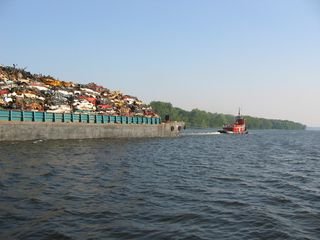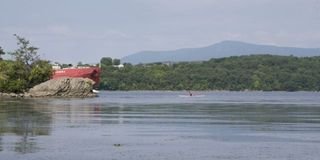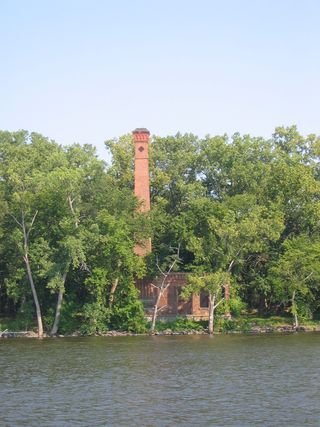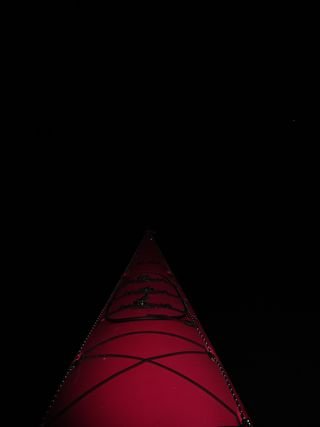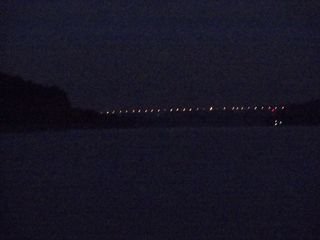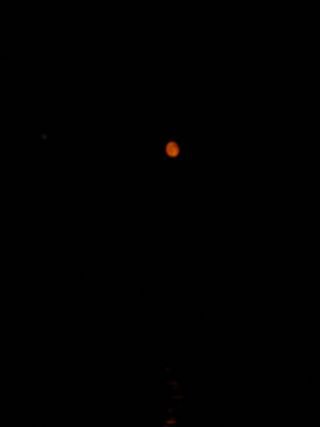Why I Love a Storm
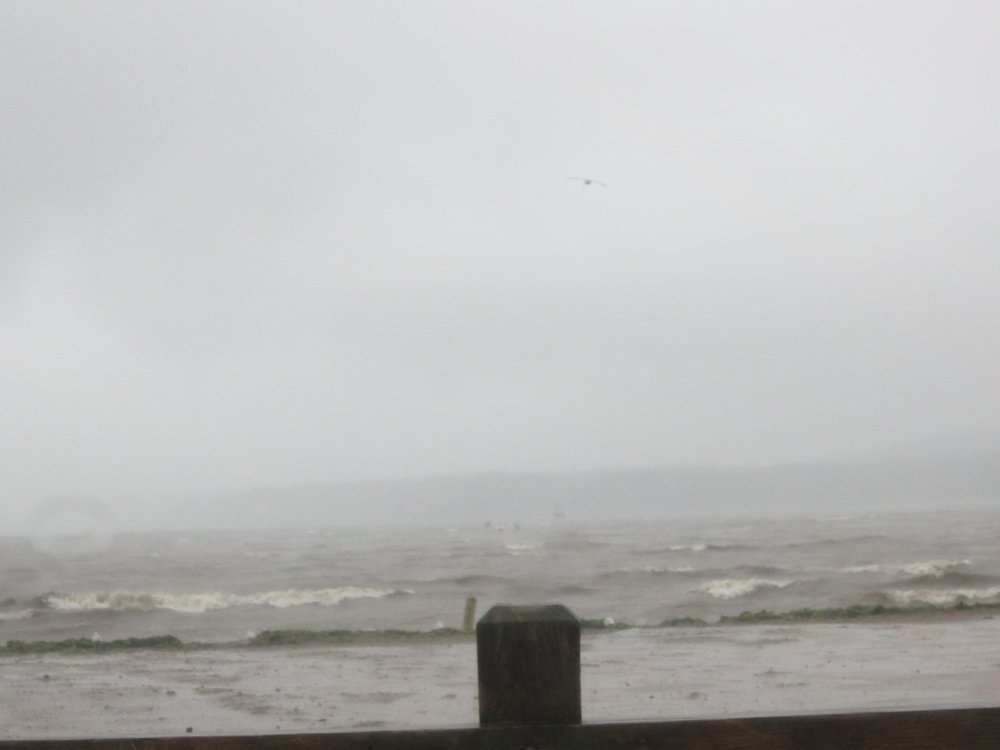 At six thirty in the evening my young friends Sasha and Liza knock on my door. I have a headlamp attached to my forehead to guide me in making dinner, something exciting like rice and beans. “We’re collecting food that might go bad and making dinner at the bar,” Sasha explains. The bar has gas burners so they can still cook. Many have electric powered stoves so they are out of luck. We are not supposed to have power for the next two to three days so things will no doubt start to turn in the fridge. It’s a great idea. But I have almost nothing in my fridge. So I take them out to my garden and give them tomatoes and chard, some basil. Who knows what they will cook up, but I love that what they want to do is feed everyone after a long day of wind and rain.
At six thirty in the evening my young friends Sasha and Liza knock on my door. I have a headlamp attached to my forehead to guide me in making dinner, something exciting like rice and beans. “We’re collecting food that might go bad and making dinner at the bar,” Sasha explains. The bar has gas burners so they can still cook. Many have electric powered stoves so they are out of luck. We are not supposed to have power for the next two to three days so things will no doubt start to turn in the fridge. It’s a great idea. But I have almost nothing in my fridge. So I take them out to my garden and give them tomatoes and chard, some basil. Who knows what they will cook up, but I love that what they want to do is feed everyone after a long day of wind and rain.
In a big storm, birds are pushed north, ahead of the winds. For a birder this is a chance to find rare birds, that is, southern birds not usually seen in these parts. So Peter and I are up at six, and soon driving through a grey, torrential downpour toward the Hudson River in Kingston. The roads are littered with debris from trees: twigs, leaves. A few downed trees block roads. Lights are out at intersections but there is little traffic at this early hour, so the road is ours.
As we navigate the streets of East Kingston we spy the white truck of our friend Mark DeDea. He has spied us as well, and backs up to join us. I love this, that the only other car on the road is a nutty birder, doing what we are doing: stomping around in plastic boots, soaked to the skin looking for birds.
As we walk down an abandoned train track to peer into the grey mist, a flock of birds circle in the distance and both Peter and Mark get excited. These are good birds. They are Hudsonian Godwits, birds with long upturned bills heading north, into the wind but away from the storm. How do they know to do this? And will they escape the fury of this storm? I feel my heart constrict as I think about this remarkable flight.

Wind! That is why I love a storm.
The day after the storm it is all blue sky, all smiles, as if nothing has happened. But there are still trees littering the roads and in the river the most amazing range of debris: a fuel tank, a bar-b-que, hundreds—thousands?—of bottles, an entire dock, all of the water chestnut that has ripped out and rafted south. There are many without power and further south there are people who have lost their lives to this storm. Everyone is pitching in after the storm, friends calling me to be sure all is ok, and me calling others to learn that all is ok, and everyone there to help out if help is needed. There is good will and gratefulness and, I dare say, even love. Love for this world, each other, this life, the birds, the wind.
Indian Point
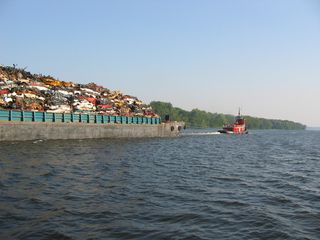
From water level, the towers loomed above me and the entire structure felt imposing. There are layers of red brick buildings smack against the river. Not a window in sight, as if whatever was contained inside shouldn’t be seen, and should not see out. I’d passed some large industry on the river—Trapp Rock up by Poughkeepsie, for instance, but nothing that felt ominous like the Indian Point plant. There are many reasons to protest nuclear power. In my life, the stories of Three Mile Island, Chernobyl and Fukushima are enough to convince anyone this is a risky source of energy. There are many reasons not to want a nuclear power plant so close to a major metropolitan area—9/11 is enough to show how vulnerable we can be. And there are many reasons not to want a nuclear power plant on the Hudson River. The plant rests on a small earthquake fault. And, the plant uses billions of gallons of water t o cool its towers and then spits this warmed water back into the river, altering the ecosystem. In the process, millions of fish are sucked into the plant and killed. But I had not thought about any of this with much care until I stroked past the plant low in my boat.

One spring, I loaded up my kayak with sleeping bag and food and pointed south on the Hudson River. I was traveling with a former student, Emmet, and we intended to take a few days, camping on islands and on the banks of the river, to make our way from my village of Tivoli to Manhattan (I write about this adventure in my upcoming book, MY REACH). This is the freedom of a river, to head out and see what you can see. And I did see many marvelous things on my journey, and lots that I wish I had not seen. Day four I passed the Indian Point nuclear power plant. Instinctively, we scooted to the western shore, giving the plant a wide berth.
From water level, the towers loomed above me and the entire structure felt imposing. There are layers of red brick buildings smack against the river. Not a window in sight, as if whatever was contained inside shouldn’t be seen, and should not see out. I’d passed some large industry on the river—Trapp Rock up by Poughkeepsie, for instance, but nothing that felt ominous like the Indian Point plant. There are many reasons to protest nuclear power. In my life, the stories of Three Mile Island, Chernobyl and Fukushima are enough to convince anyone this is a risky source of energy. There are many reasons not to want a nuclear power plant so close to a major metropolitan area—9/11 is enough to show how vulnerable we can be. And there are many reasons not to want a nuclear power plant on the Hudson River. The plant rests on a small earthquake fault. And, the plant uses billions of gallons of water t o cool its towers and then spits this warmed water back into the river, altering the ecosystem. In the process, millions of fish are sucked into the plant and killed. But I had not thought about any of this with much care until I stroked past the plant low in my boat.
Floating in a kayak on a big river I often feel tiny, especially next to tankers or the barges that shove north and south at all times of day and night (in this photo, a tanker is emerging around Magdalen Island--that little dot is me). But my river view is an important perspective, it’s the same view a beaver might have, or a great blue heron wading by the shoreline. In a kayak, there is an intimacy with the water, whether that water is clean or not, the sights beautiful or not. And I did not like being intimate with a nuclear power plant. It took experiencing the chill of Indian Point on a cool rainy spring day to make me care about shutting down the plant.
And so it comes as good news that Governor Cuomo wants to shut down Indian Point and that new legislation will make this possible. This long battle may finally come to an end. According to Times reporters, Entergy, the company that runs the plant, came away from the meetings “alarmed” with the governor’s direct and strong intentions.
Even though I am skeptical that Indian Point will be shut down, I’m going to be naïve and pretend this is true. I have decided to begin my celebration by wondering what happens to a closed nuclear power plant. Will it join the history of closed industry along the river? When I paddle the length of the estuary, I have passed brick towers that are the remains of the icehouses (photo at left) that stored and brought ice to keep Manhattan cool. There are the sheds that were used in brick making just north of Kingston where teenagers now come to skateboard, the clatter of their leaps and landings echoing through the tall, metal-roofed buildings. There are the remains of the cement industry, and an enormous brick building near the water in Germantown that says “Cold Storage.” These ghosts of industry past I find intriguing, often beautiful. I slip onto shore and out of my boat and poke around these structures, wary of broken glass and often taking a brick as a souvenir. Manhattan is built from Hudson Valley cement and brick. In an odd nostalgia, I wish that this industry were still alive, but cement is reduced to three plants near Smith’s Landing, and the brick industry closed for good in 2001. Yet the end of these industries means a cleaner river, a quieter, calmer river for me to paddle on. One hundred years ago, would I have wanted to see the brick industry close?
So in a hundred years will someone paddle past the crumbling towers of Indian Point and wonder about nuclear power? Perhaps there will be a certain nostalgia as she wishes that we still had that plant generating electricity for New York City. Or will she wonder what we ever imagined was good or sane about nuclear energy?
Images of Eagles
I pulled out my camera to photograph the sixth bald eagle I had seen that morning on the river. It was a smooth gesture—the small camera sliding out of my life vest pocket. I hit the on button. As the lens emerged so too did a wave. I leaned, and with one hand took up my paddle that rested across the cockpit. Somewhere in those movements my camera flew out of my hand and landed with a definite plop into the water. I watched as it spiraled through the turbid water and out of sight toward the bottom of the Hudson River. I had owned the camera for less than a month.
Sigh.
There will be no photos for this blog post. No photo of the landing at Malden, where the water treatment plant nudges the town dock and a sign tells of the British who anchored offshore before burning down a few mansions along the river. There will be no photo of the abandoned ice tower, or the abandoned brick yard north of Malden, the beach a spread of bricks. And, there will be no photos of eagles one through five, three of them mature with their white heads and dark bodies and two immature, a more scruffy look.
I pulled out my camera to photograph the sixth bald eagle I had seen that morning on the river. It was a smooth gesture—the small camera sliding out of my life vest pocket. I hit the on button. As the lens emerged so too did a wave. I leaned, and with one hand took up my paddle that rested across the cockpit. Somewhere in those movements my camera flew out of my hand and landed with a definite plop into the water. I watched as it spiraled through the turbid water and out of sight toward the bottom of the Hudson River. I had owned the camera for less than a month.
Sigh.
There will be no photos for this blog post. No photo of the landing at Malden, where the water treatment plant nudges the town dock and a sign tells of the British who anchored offshore before burning down a few mansions along the river. There will be no photo of the abandoned ice tower, or the abandoned brick yard north of Malden, the beach a spread of bricks. And, there will be no photos of eagles one through five, three of them mature with their white heads and dark bodies and two immature, a more scruffy look.
But that doesn’t mean that the eagles weren’t there. I have to content myself with the images I hold in my head, the one eagle low in a tree, lurking, until I drifted too close. And the pair high up, sitting erect before taking flight across the river. Eagles have returned along the Hudson River. This isn’t news, as the return of the eagle has been celebrated by removing it in 2007 from the Endangered Species List. For a while, the situation for the eagle was dire: in the 70s there was one breeding pair in New York State; it wasn’t until 1997 that a pair bred in the Hudson Valley. Now there are over a dozen nests the length of the estuary. This summer it seems I can’t be on the river without seeing an eagle. They are always a welcome sight.
OK, I can’t help myself. Here is a photo taken by Peter of an eagle from the Saugerties Lighthouse.
Smaller, and less majestic, were the spotted sandpipers. They fly with a wingbeat that appears to hold a momentary hesitation. And once a sandpiper lands it walks about in sandpiperly fashion, while continuously bobbing its tail.
After my disappointment at losing my camera, I decided to head home. I was two hours north on the river and looked forward to an easy return with the outgoing tide. It was hot out, but with a breeze that kept me cool. I wanted to cross the river and head home on the eastern shore. The river is about three quarters of a mile wide at this location. A haze cloaked the far shore, and my view both north and south. The river seemed empty. But the river was not calm. The wind had really picked up from the southeast and that met the current to create big waves that crested mid-river. There were white caps. I decided not to cross, and hoped the river would calm before I had to.
I headed south clinging to the western shore. It’s remarkably green in this section, with houses that nudge the shoreline. But I wasn’t focused on the sights, only on my forward movement, which was painfully slow. I wished I had brought my anemometer with me to measure the speed of wind. I made a guess that we were at a level 5 on the Beaufort Scale, partly because that is my favorite level. A fresh breeze. “Small trees in leaf begin to sway; crested wavelets form on inland waters.” Actually, I thought it was more than a 5, as the cottonwoods on shore shook with the wind, a lovely sound, if only I did not have to fight the wind.
At the Saugerties Lighthouse I pulled onto the sandy patch that appears at low tide. I slipped out of my boat, grateful for a rest. Two older couples sat on the benches under the mulberry tree. The one told me that this wind is a constant in the summer, “comes right out of the southeast every day.” Since I paddle the river every day I can say that the wind doesn’t come out of the southeast every day. Some days are dead calm. And rarely are the days as rough as they were this morning. Dock, who lives on the river in Glasco, was visiting the Lighthouse as well, and had arrived on his small sailboat (he seems to own dozens of boats, many with remarkable set ups that allow him to paddle with his legs). “It’s rough out there,” I said by way of greeting. He nodded. “They say it will be a ten today,” he replied. Dock knows the river. He is slender with a grey beard, that makes him look river-wise. So I didn’t doubt that ten, but I wasn’t sure what he meant by that. If ten miles an hour then that would make it a 3 on the Beaufort scale. A gentle breeze. No, this was stronger than that. And it couldn’t be a ten on the Beaufort scale, as that is a storm when trees are uprooted.
But--ten sounds big, and so were the waves.
I scanned both directions through my binoculars, looking for a barge or tanker on the horizon. Two big boats had overtaken me on my return and I hadn’t been aware of them until they were abreast (I was well outside of the shipping channel). But the wind had masked the rumble of the tug’s engines. I saw a boat in the far distance but was sure I would make it across before it arrived. Fueled with adrenalin, I dug into the water, shoveling my way across the river. My boat slapped down in the trough between waves, and water splashed into my boat. Twenty minutes later, when I slid onto the rocky landing in Tivoli I was grateful to be home. I had travelled two hours north and had taken three on the return.
The river had my camera. But I had sore muscles and this small tale after a long morning paddle.
The River at Night

It’s a strange thing to launch in the dark. Usually I start my paddles in daylight and journey into the night. But to start in the dark felt a bit odd. What was I paddling toward but more darkness?
The water felt warm around my ankles as I stepped into the river. I twisted on my 360-degree white light that I stick onto the back of my boat. Immediately, bugs flew to the bright light, mobbing my boat. I turned the light off, preferring to move dark and silent through the water.
Though it was low tide, the water was still making a push to the sea. I shoved south with the outgoing current.
“You kayaking?” someone with a drunken slur called from shore.
“Yep,” I called back.
“You should use your light. I’ve run over boats at night,” he said.
I bet you have, I thought. I kept on paddling. The river was calm, empty, wide. The moon had yet to rise.
Yesterday was one of those hot July days that keep me inside. Lucky for me I had the thrilling and heartbreaking women’s soccer game to watch. Then, I needed to be on the river. At ten at night, I drove across the train tracks and into the gravel space near the river. There was a van at the launch and several people chatting on the make shift dock. They too were no doubt looking for cooler temperatures. The lights from Friendship street offered a little help as I unstrapped my boat, slid it off the car and walked it out to the water. It was low tide, the water lapping gently onto the rocks.
It’s a strange thing to launch in the dark. Usually I start my paddles in daylight and journey into the night. But to start in the dark felt a bit odd. What was I paddling toward but more darkness?
The water felt warm around my ankles as I stepped into the river. I twisted on my 360-degree white light that I stick onto the back of my boat. Immediately, bugs flew to the bright light, mobbing my boat. I turned the light off, preferring to move dark and silent through the water.
Though it was low tide, the water was still making a push to the sea. I shoved south with the outgoing current.
“You kayaking?” someone with a drunken slur called from shore.
“Yep,” I called back.
“You should use your light. I’ve run over boats at night,” he said.
I bet you have, I thought. I kept on paddling. The river was calm, empty, wide. The moon had yet to rise.
A mansion on shore—the Pynes—shone lights into the night sky, giving me a sense of life on shore. On the water, I felt the pinpricks of bugs, as I paddled in the shadow of the shoreline that rises to the east. White lights dotted the far shore, and a flashing green light indicated the channel for the bigger boats that move at night. In the distance danced the lights of the Kingston-Rhinecliff bridge (photo at left!)
Paddling in the dark disorients me in intriguing ways. Sounds are amplified and smells become acute. My sense of distance is altered as well as the depth of the water. I often imagine that the river—which is relatively shallow outside of the shipping channel—is hundreds of feet deep. In the dark, I skim the surface as if on a high balance beam.
Smack, a fish flipped just to my right startling me. My heart raced. This smidgen of fear has always been a part of my outdoor adventures. It’s the fear that keeps me alert to all around me. It reminds me of the dangers, which are also the joys of outdoor adventure.
As I neared Magdalen Island, which lay huddled in the dark, the moon rose, a few days past full, a beautiful glowing orange-red lopsided ball. I heard voices from the island and wondered if someone was camping there. Or of someone might be there looting the island. But it was a canoe with a man and woman heading back to Tivoli. I saw their outline in the dark.
“Oh, there’s someone,” he said when I was about fifteen feet away.
“It’s pretty dark to be paddling,” I joked.
And we went our separate ways.
At the end of Magdalen a great blue heron croaked its discontent that I had disturbed its roost for the night. I slushed through the shallow, grass-filled water on the east side of the island. A fish flipped in the water and smacked against the hull of my boat. I let out a cry of alarm. Was it a sturgeon there, lurking in those shallow waters? I liked to imagine the long, primitive fish making its fearless way through the dark.
I chugged my way back north against the tide. A train passing interrupted the silence, blowing its horn, long and insistent. When I pulled out of the water an hour later, the river had worked its magic: the heat of the day was replaced with the lights on shore, the lopsided orange moon, and a rush of excitement at the slap of a fish.
